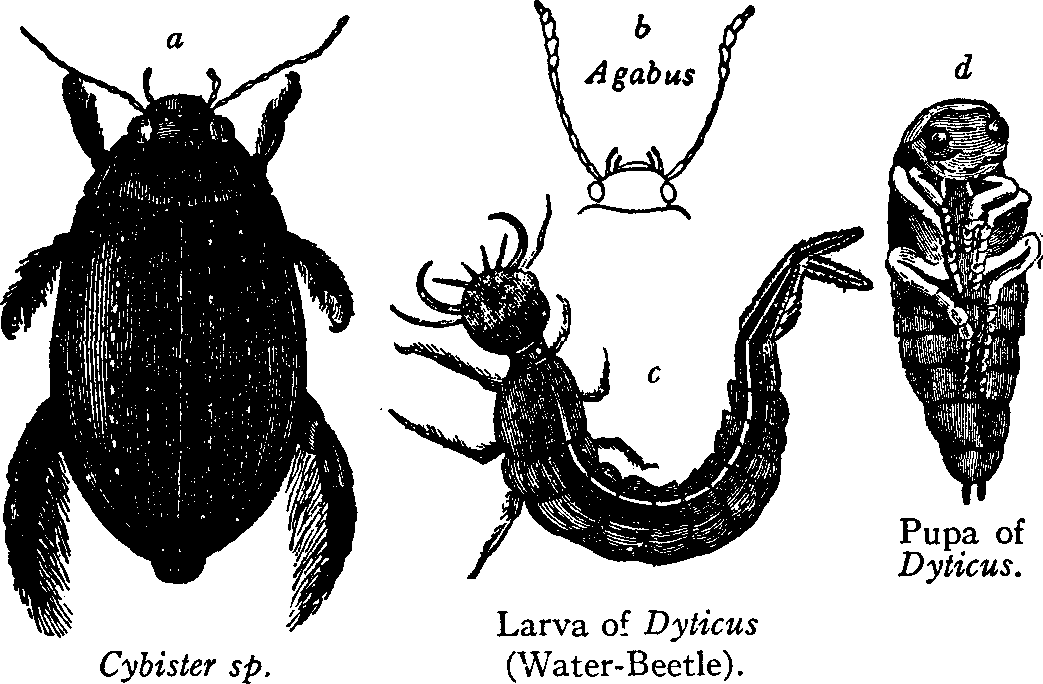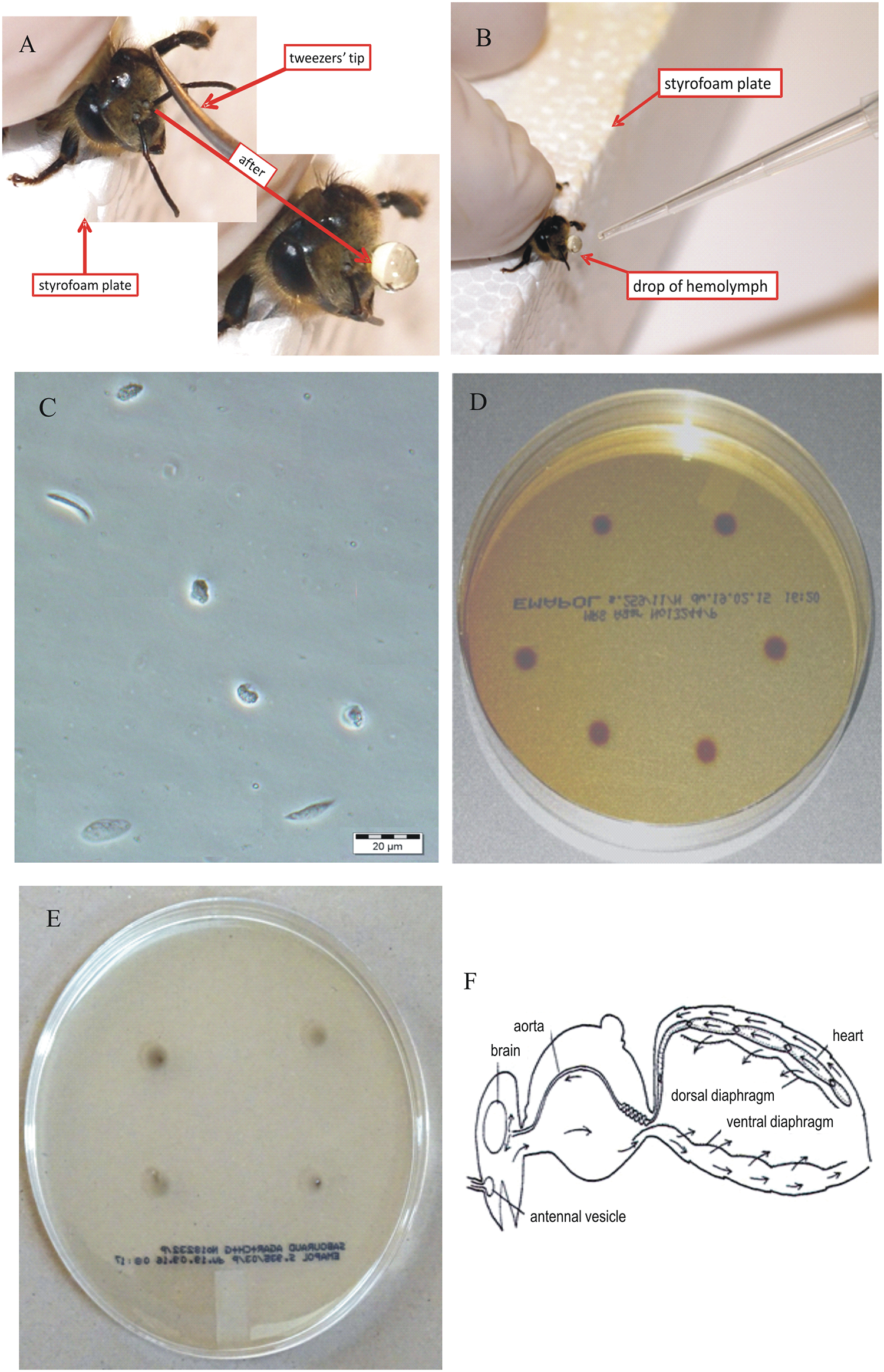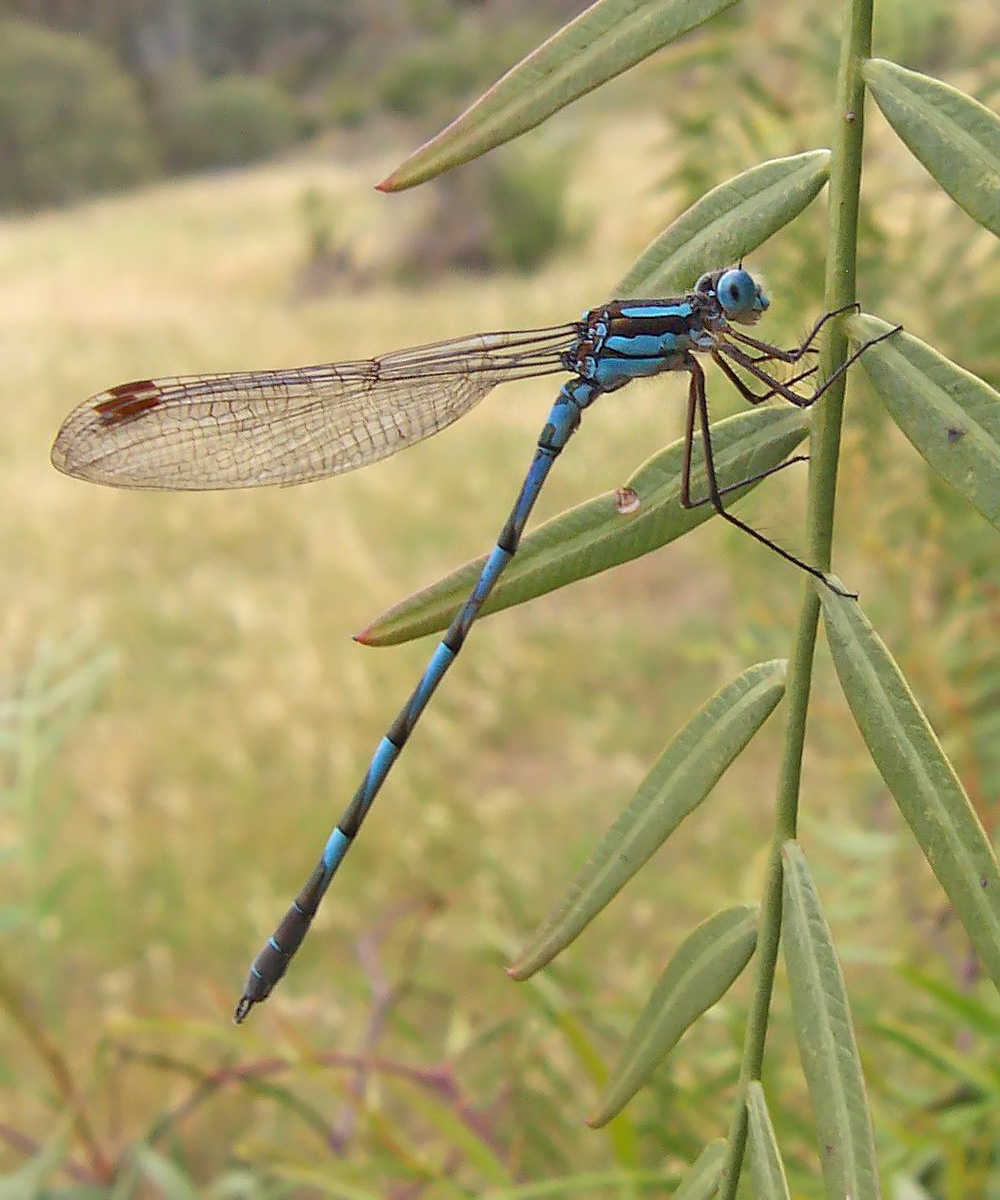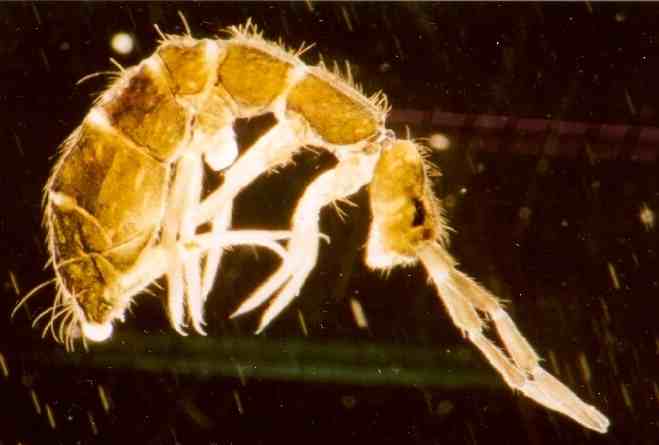|
Aquatic Insect
Aquatic insects or water insects live some portion of their life cycle in the water. They feed in the same ways as other insects. Some ''diving'' insects, such as predatory diving beetles, can hunt for food underwater where land-living insects cannot compete. Breathing One problem that aquatic insects must overcome is how to get oxygen while they are under water. Almost all animals require a source of oxygen to live. Insects draw air into their bodies through spiracles, holes found along the sides of the abdomen. These spiracles are connected to tracheal tubes where oxygen can be absorbed. All aquatic insects have become adapted to their environment with the specialization of these structures ;Aquatic adaptations # Simple diffusion over a relatively thin integument # Temporary use of an air bubble # Extraction of oxygen from water using a plastron or blood gill # Storage of oxygen in hemoglobin and hemocyanin molecules in hemolymph # Taking oxygen from surface via brea ... [...More Info...] [...Related Items...] OR: [Wikipedia] [Google] [Baidu] |
Water Beetle
A water beetle is a generalized name for any beetle that is adapted to living in water at any point in its life cycle. Most water beetles can only live in fresh water, with a few marine species that live in the intertidal zone or littoral zone. There are approximately 2000 species of true water beetles native to lands throughout the world. Many water beetles carry an air bubble, called the elytra cavity, underneath their abdomens, which provides an air supply, and prevents water from getting into the spiracles. Others have the surface of their exoskeleton modified to form a plastron, or "physical gill", which permits direct gas exchange with the water. Some families of water beetles have fringed hind legs adapted for swimming, but most do not. Most families of water beetles have larvae that are also aquatic; many have aquatic larvae and terrestrial adults. Diet Water beetles can be either herbivores, predators, or scavengers. Herbivorous beetles eat only aquatic vegetation, such ... [...More Info...] [...Related Items...] OR: [Wikipedia] [Google] [Baidu] |
Hemolymph
Hemolymph, or haemolymph, is a fluid, similar to the blood in invertebrates, that circulates in the inside of the arthropod's body, remaining in direct contact with the animal's tissues. It is composed of a fluid plasma in which hemolymph cells called hemocytes are dispersed. In addition to hemocytes, the plasma also contains many chemicals. It is the major tissue type of the open circulatory system characteristic of arthropods (for example, arachnids, crustaceans and insects). In addition, some non-arthropods such as mollusks possess a hemolymphatic circulatory system. Oxygen-transport systems were long thought unnecessary in insects, but ancestral and functional hemocyanin has been found in the hemolymph. Insect "blood" generally does not carry hemoglobin, although hemoglobin may be present in the tracheal system instead and play some role in respiration. Method of transport In the grasshopper, the closed portion of the system consists of tubular hearts and an ao ... [...More Info...] [...Related Items...] OR: [Wikipedia] [Google] [Baidu] |
Odonata
Odonata is an order of predatory flying insects that includes the dragonflies and damselflies (as well as the '' Epiophlebia'' damsel-dragonflies). The two major groups are distinguished with dragonflies (Anisoptera) usually being bulkier with large compound eyes together and wings spread up or out at rest, while damselflies (suborder Zygoptera) are usually more slender with eyes placed apart and wings folded together along body at rest. Adult odonates can land and perch, but rarely walk. All odonates have aquatic larvae called naiads or nymphs, and all of them, larvae and adults, are carnivorous and are almost entirely insectivorous, although at the larval stage they will eat anything that they can overpower, including small fish, tadpoles, and even adult newts. The adults are superb aerial hunters and their legs are specialised for catching prey in flight. Odonata in its narrow sense forms a subgroup of the broader Odonatoptera, which contains other dragonfly-like insects ... [...More Info...] [...Related Items...] OR: [Wikipedia] [Google] [Baidu] |
Mayflies
Mayflies (also known as shadflies or fishflies in Canada and the upper Midwestern United States, as Canadian soldiers in the American Great Lakes region, and as up-winged flies in the United Kingdom) are aquatic insects belonging to the order (biology), order Ephemeroptera. This order is part of an ancient group of insects termed the Palaeoptera, which also contains dragonflies and damselflies. Over 3,000 species of mayfly are known worldwide, grouped into over 400 genera in 42 family (biology), families. Mayflies have ancestral traits that were probably present in the first flying insects, such as long tails and Insect wing, wings that do not fold flat over the insect morphology#Abdomen, abdomen. Their immature stages are aquatic fresh water forms (called "naiads" or "nymph (biology), nymphs"), whose presence indicates a clean, unpolluted and highly oxygenated aquatic environment. They are unique among insect orders in having a fully winged terrestrial preadult stage, the sub ... [...More Info...] [...Related Items...] OR: [Wikipedia] [Google] [Baidu] |
Springtail
Springtails (class Collembola) form the largest of the three lineages of modern Hexapoda, hexapods that are no longer considered insects. Although the three lineages are sometimes grouped together in a class called Entognatha because they have internal Arthropod mouthparts, mouthparts, they do not appear to be any more closely related to one another than they are to insects, which have external mouthparts. Springtails are omnivorous, free-living organisms that prefer moist conditions. They do not directly engage in the decomposition of organic matter, but contribute to it indirectly through the fragmentation of organic matter and the control of soil microbial communities. The word ''Collembola'' is from Ancient Greek 'glue' and 'peg'; this name was given due to the existence of the collophore, which was previously thought to stick to surfaces to stabilize the creature. Early DNA sequence studies suggested that Collembola represent a separate Lineage (evolution), evolutionary ... [...More Info...] [...Related Items...] OR: [Wikipedia] [Google] [Baidu] |
Hydrofuge
In chemistry and materials science, ultrahydrophobic (or superhydrophobic) surfaces are highly hydrophobic, i.e., extremely difficult to wet. The contact angles of a water droplet on an ultrahydrophobic material exceed 150°. This is also referred to as the lotus effect, after the superhydrophobic leaves of the lotus plant. A droplet striking these kinds of surfaces can fully rebound like an elastic ball. Interactions of bouncing drops can be further reduced using special superhydrophobic surfaces that promote symmetry breaking, pancake bouncing or waterbowl bouncing. Theory In 1805, Thomas Young defined the contact angle ''θ'' by analysing the forces acting on a fluid droplet resting on a smooth solid surface surrounded by a gas. :\gamma_\ =\gamma_+\gamma_\cos where :\gamma_\ = Interfacial tension between the solid and gas :\gamma_\ = Interfacial tension between the solid and liquid :\gamma_\ = Interfacial tension between the liquid and gas ''θ'' can be measured usin ... [...More Info...] [...Related Items...] OR: [Wikipedia] [Google] [Baidu] |
Mosquito
Mosquitoes, the Culicidae, are a Family (biology), family of small Diptera, flies consisting of 3,600 species. The word ''mosquito'' (formed by ''Musca (fly), mosca'' and diminutive ''-ito'') is Spanish and Portuguese for ''little fly''. Mosquitoes have a slender segmented body, one pair of wings, three pairs of long hair-like legs, and specialized, highly elongated, piercing-sucking mouthparts. All mosquitoes drink nectar from flowers; females of some species have in addition adapted to drink blood. The group diversified during the Cretaceous period. Evolutionary biology, Evolutionary biologists view mosquitoes as micropredators, small animals that Parasitism, parasitise larger ones by drinking their blood without immediately killing them. Parasitology, Medical parasitologists view mosquitoes instead as Disease vector, vectors of disease, carrying protozoan parasites or bacterial or virus, viral pathogens from one Host (biology), host to another. The mosquito life cycle cons ... [...More Info...] [...Related Items...] OR: [Wikipedia] [Google] [Baidu] |
Water Scorpion
Nepidae is a family of exclusively aquatic Heteropteran insects in the order Hemiptera. They are commonly called water scorpions for their superficial resemblance to scorpions, due to their raptorial forelegs and the presence of a long slender process at the posterior end of the abdomen, resembling a tail. There are 14 genera in the family, in two subfamilies, Nepinae and Ranatrinae. Members of the genus ''Ranatra'', the most widespread and species-rich genus, are sometimes called needle bugs or water stick insects as they are slenderer than ''Nepa (bug), Nepa''. While water scorpions do not sting with their tail (it is used for breathing), they do have a painful bite (strictly speaking a sting by their pointed proboscis), but this is much less harmful to humans than a true scorpion's sting. Range and habitat Nepidae are found on all continents except Antarctica. They mostly inhabit stagnant or slow-moving freshwater habitats like ponds, marshes, canals and streams. Exceptionall ... [...More Info...] [...Related Items...] OR: [Wikipedia] [Google] [Baidu] |
Nitrogen
Nitrogen is a chemical element; it has Symbol (chemistry), symbol N and atomic number 7. Nitrogen is a Nonmetal (chemistry), nonmetal and the lightest member of pnictogen, group 15 of the periodic table, often called the Pnictogen, pnictogens. It is a common element in the universe, estimated at Abundance of the chemical elements, seventh in total abundance in the Milky Way and the Solar System. At standard temperature and pressure, two atoms of the element chemical bond, bond to form N2, a colourless and odourless diatomic molecule, diatomic gas. N2 forms about 78% of Atmosphere of Earth, Earth's atmosphere, making it the most abundant chemical species in air. Because of the volatility of nitrogen compounds, nitrogen is relatively rare in the solid parts of the Earth. It was first discovered and isolated by Scottish physician Daniel Rutherford in 1772 and independently by Carl Wilhelm Scheele and Henry Cavendish at about the same time. The name was suggested by French chemist ... [...More Info...] [...Related Items...] OR: [Wikipedia] [Google] [Baidu] |
Diffusion
Diffusion is the net movement of anything (for example, atoms, ions, molecules, energy) generally from a region of higher concentration to a region of lower concentration. Diffusion is driven by a gradient in Gibbs free energy or chemical potential. It is possible to diffuse "uphill" from a region of lower concentration to a region of higher concentration, as in spinodal decomposition. Diffusion is a stochastic process due to the inherent randomness of the diffusing entity and can be used to model many real-life stochastic scenarios. Therefore, diffusion and the corresponding mathematical models are used in several fields beyond physics, such as statistics, probability theory, information theory, neural networks, finance, and marketing. The concept of diffusion is widely used in many fields, including physics (Molecular diffusion, particle diffusion), chemistry, biology, sociology, economics, statistics, data science, and finance (diffusion of people, ideas, data and price v ... [...More Info...] [...Related Items...] OR: [Wikipedia] [Google] [Baidu] |
Setae
In biology, setae (; seta ; ) are any of a number of different bristle- or hair-like structures on living organisms. Animal setae Protostomes Depending partly on their form and function, protostome setae may be called macrotrichia, chaetae, scales, or informally, hairs. The setal membrane is not cuticularized, so movement is possible. Annelid setae are stiff bristles present on the body. They allow earthworms and their relatives to attach to the surface and prevent backsliding during peristaltic motion. These hairs make it difficult to pull a worm straight from the ground. Setae in oligochaetes (the group including earthworms) are largely composed of chitin. They are classified according to the limb to which they are attached; for instance, notosetae are attached to notopodia; neurosetae to neuropodia. The setae on polychaete worms are referred to as chaeta due to their differing morphology. Crustaceans have mechano- and chemosensory setae. Setae are especially pres ... [...More Info...] [...Related Items...] OR: [Wikipedia] [Google] [Baidu] |
Megaloptera
Megaloptera is an order of insects. It contains the alderflies, dobsonflies and fishflies, and there are about 300 known species. The order's name comes from Ancient Greek, from ''mega-'' (μέγα-) "large" + ''pteryx'' (πτέρυξ) "wing", in reference to the large, clumsy wings of these insects. Megaloptera are relatively unknown insects across much of their range, due to the adults' short lives, the aquatic larvae's often-high tolerance of pollution (so they are not often encountered by swimmers etc.), and the generally crepuscular or nocturnal habits. However, in the Americas the dobsonflies are rather well known, as their males have tusk-like mandibles. These, while formidable in appearance, are relatively harmless to humans and other animals; much like a peacock's feathers, they serve mainly to impress females. However, the mandibles are also used to hold females during mating, and some male dobsonflies spar with each other in courtship displays, trying to flip eac ... [...More Info...] [...Related Items...] OR: [Wikipedia] [Google] [Baidu] |









